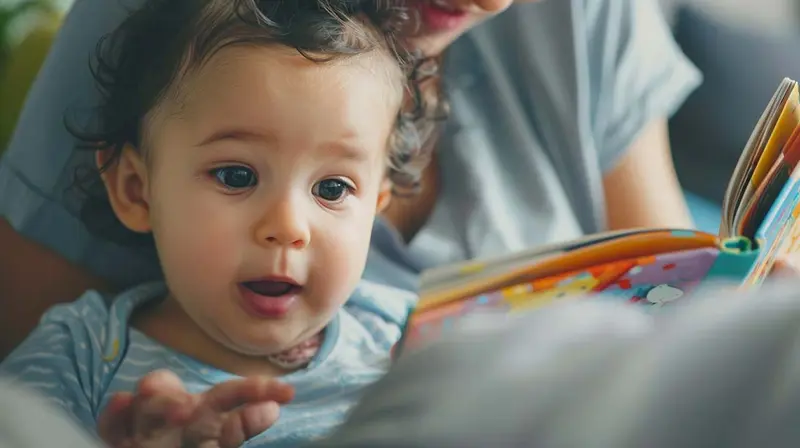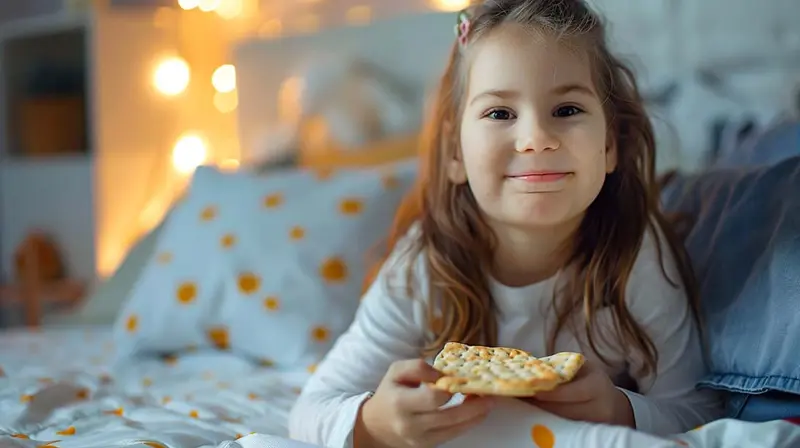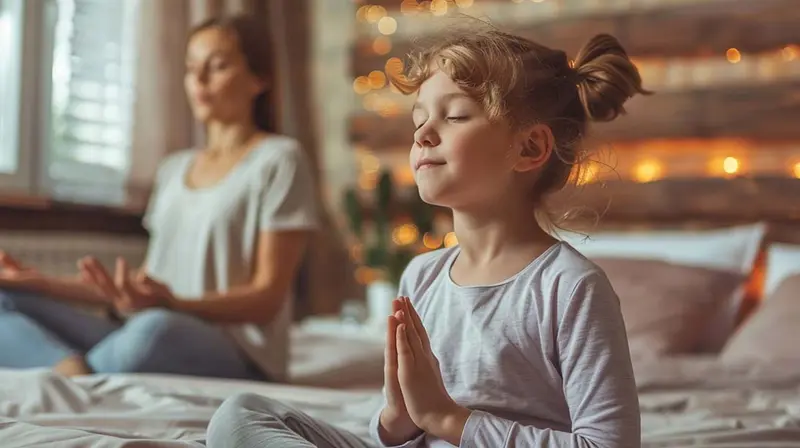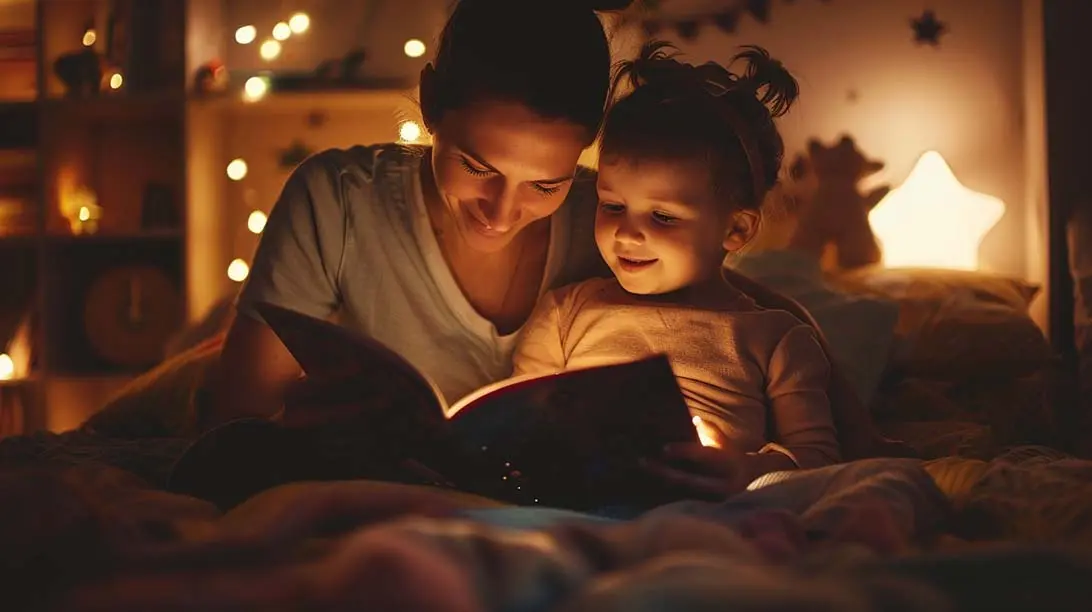Struggling to get your child to fall asleep quickly? You’re not alone. In this guide, we’ll share practical tips and techniques that can help your child transition into sleep swiftly. From establishing a peaceful bedtime routine to creating a sleep-conducive environment, we’ll cover the essentials of how to fall asleep fast for kids. Get ready to dive into strategies that pave the way for faster, more restful sleep for your little one.
Key Takeaways
- Establish a relaxing bedtime routine with storytime, lullabies, and consistency to signal it’s time to unwind and sleep.
- Create a sleep-conducive environment with cool, dark, quiet bedrooms and use comfort items or soft lighting for kids afraid of the dark.
- Encourage daytime physical activities and a wind-down period before bed, while being mindful of dietary choices that affect sleep.
Establishing a Swift and Soothing Bedtime Ritual

Ever heard the saying, “Old habits die hard?” Well, it’s true! And in the world of sleep, habits form the backbone of a restful night. Establishing a consistent bedtime routine is like giving your child a warm, comforting hug that prepares them for a peaceful night’s sleep. Incorporating various bedtime routines can include activities that calm your child’s mind and body, signaling to them that it’s time to wind down. These activities could involve reading a captivating bedtime story, playing soothing lullabies, or even just brushing their tiny teeth.
So, let’s dive deeper and explore each of these elements of a relaxing bedtime routine.
The Magic of Storytime

Picture this: a cozy bedtime, your child tucked in, their eyes sparkling with anticipation as you flip open a colorful book. Yes, the magic of storytime! Bedtime stories serve as a unique bridge between the energetic playtime and the tranquil sleep time. They gently engage your child’s imagination, preparing their mind for a peaceful rest.
This quiet, imaginative time is like a soothing balm, offering your child a smoother transition to sleep. So, why not turn the page to a peaceful night’s sleep with an enchanting bedtime story tonight?
The Role of Lullabies and Soothing Music

Now, let’s tune into the calming world of lullabies and soothing music. These gentle melodies can act as a sleep cue for your child, easing their transition from the hustle and bustle of the day to the calm of the night. They help relax your child’s mind, making it easier for them to fall asleep. It’s like a lullaby whispers to your child, “Shh… it’s time to sleep”.
So, let’s hit the play button on soothing music and set the stage for a restful night’s sleep.
Consistency is Key
If there’s a secret sauce to a successful bedtime routine, it’s consistency! Maintaining a regular sleep schedule reinforces your child’s natural sleep-wake cycle, contributing to better sleep habits. It’s like training your child’s body clock to anticipate sleep and wake up at set times, ensuring they get enough rest and are ready for school the next day.
A consistent routine not only helps minimize disruptions to your child’s sleep but also provides a sense of stability and comfort. And remember, good sleep hygiene is essential in establishing these consistent sleep patterns to combat sleep disorders.
Creating an Ideal Sleep Environment

Let’s talk about the role of your child’s bedroom in their sleep. It’s more than just a space for their cute little bed and colorful toys. It’s a haven for peaceful sleep! A sleep-friendly environment should be dark, quiet, and comfortable. Imagine your child’s bedroom as a sleepy cocoon, perfectly catered to their comfort, ensuring they get the quality sleep they need.
But how do we achieve this? Let’s delve into the essential elements of an ideal sleep environment.
A Room for Rest
When it comes to creating a sleep-friendly room, comfort is key! The right room temperature and comfy bedding can influence how quickly your child falls asleep. Picture a slightly cool room with soft, cozy bedding, nestling your child into a relaxing embrace. It’s like the room itself is whispering, “Relax, it’s time for sleep”.
So, let’s turn their room into a restful sanctuary that invites them into the land of dreams in their own bed.
Lights Out, Dreams On
Lights out doesn’t have to mean fears on! For children afraid of the dark, a gentle night light can provide a sense of security, helping them feel more comfortable at bedtime. Plus, these dim lights can help maintain melatonin production, a hormone crucial for sleep-wake cycles.
So, with a simple flick of a switch, your child’s fears can drift away into the night, making way for a peaceful slumber.
Quiet Zone
Hush, it’s time for sleep! A quiet room is a key ingredient for a good night’s sleep. It’s about creating an oasis of calm that’s free from the bustling sounds of the rest of the house. Some ways to achieve a quiet sleep environment include:
- Installing door seals to reduce noise from outside the room
- Hanging acoustic curtains to absorb sound
- Choosing specific types of flooring that minimize noise
These measures can all contribute to reducing noise and creating a serene sleep environment.
A quiet room is like a gentle lullaby, whispering to your child that it’s time to rest.
Balancing Activity and Relaxation

It’s not all about the night, though. Daytime activities also play a significant role in your child’s sleep. It’s about striking a balance between active play during the day and relaxation at night.
Here are some tips to help your child get better sleep at night:
- Encourage regular physical activities during the day
- Make sure your child gets plenty of exposure to sunlight
- Establish a relaxing bedtime routine
- Create a calm and comfortable sleep environment
- Limit screen time before bed
By following these tips, you can help your child overcome sleep problems, including trouble falling asleep and trouble sleeping, ensuring a better night’s sleep.
But how do we ensure this balance? Let’s explore!
Encouraging Daytime Play
Time to play! Let’s not underestimate the power of a good game of catch or a fun bike ride. Active children are healthy children, and healthy children sleep better!
Daytime physical activities not only help your child expend energy but also expose them to natural sunlight, helping regulate their circadian rhythms and improve their sleep patterns. So, let’s put on those sneakers and embrace the joy of play!
Wind Down Time
After a day of fun and games, it’s time to wind down. Calming activities like a warm bath or muscle relaxation exercises can help your child transition from the day’s activities to a peaceful night’s sleep. These relaxation techniques provide your child with the opportunity to calm their bodies and prepare their minds for sleep. Some examples of calming activities include:
- Taking a warm bath
- Doing muscle relaxation exercises
- Reading a book
- Listening to soft music
- Practicing deep breathing exercises
By incorporating these activities into your child’s bedtime routine, you can help them relax and get a good night’s sleep.
So, let’s dim the lights, play some calming music, and welcome the peaceful night.
Nutrition and Sleep Connection

Did you know that what your child eats can impact their sleep? Yes, there’s a strong link between nutrition and sleep! A satisfying evening meal can prevent those midnight hunger pangs, while certain snacks can even induce sleep. But, there are also foods to avoid.
Let’s explore how we can nourish your child towards a restful child’s sleep.
Sleep-Inducing Snacks
A light snack before bedtime can do wonders for your child’s sleep. Foods like crackers with cheese or bananas with almond butter can facilitate the brain’s access to tryptophan, aiding in sleep. Even a small snack can make a big difference in your child’s sleep quality.
So, let’s fill their tummies with sleep-friendly snacks and pave the way for sweet dreams!
Steering Clear of Stimulants
While some foods can promote sleep, others could lead to sleepless nights. Caffeine and sugar, often hidden in candies, gums, and energy drinks, can disrupt your child’s sleep. These stimulants can not only delay the onset of sleep but also affect your child’s mood and behavior.
So, let’s be mindful of their intake, especially close to bedtime, and ensure peaceful nights for your child.
Addressing Sleep Anxiety and Fears

Bedtime fears and anxiety can turn the peaceful night into a frightening ordeal for your child. But don’t worry, there are ways to help your little one conquer these fears! From understanding the causes of their anxiety to transforming negative sleep associations into positive ones, there are strategies you can use to ease their worries.
Let’s navigate through these nighttime fears and create a positive sleep experience for your child.
Comforting Presences
A cuddly teddy bear or a soft blanket can be a source of comfort for your child at bedtime. These objects can provide a sense of safety and familiarity, helping your child feel secure as they drift off to sleep.
So, let’s invite their favorite teddy to join them in their sleepy adventure and provide a comforting presence at bedtime.
Confronting the Monsters
How about introducing a magical character to combat nighttime fears? Say hello to the Sleep Fairy! This friendly character can provide a sense of protection, rewarding your child for their bravery.
A simple concept that can turn fear-filled nights into a game where bravery is rewarded with magical trinkets. So, let’s welcome the Sleep Fairy and turn those bedtime fears into dreams!
Pre-Sleep Techniques for Rapid Rest

Once the bedtime routine is set and the fears are addressed, it’s time to explore some pre-sleep techniques. These are strategies that can help your child relax and fall asleep faster. They range from mindfulness meditation to progressive muscle relaxation.
Let’s delve into these techniques and guide your child into rapid rest.
Mindfulness and Meditation
Mindfulness and meditation can be a powerful tool in your child’s sleep routine. Techniques like deep breathing, body scans, and visualization can help your child relax and prepare their bodies for sleep. And with handy meditation apps, guiding your child through these exercises can be a breeze.
So, let’s breathe in, breathe out, and journey into peaceful sleep, free from sleep apnea, and ensure we stay asleep.
Progressive Muscle Relaxation
Ready for some muscle magic? Progressive muscle relaxation involves tensing and relaxing different muscle groups, helping your child release tension and prepare for sleep. It’s like giving your child’s body a gentle massage, easing them into a restful night.
So, let’s flex those muscles and then let them relax into a peaceful slumber.
Tailoring Sleep Strategies to Your Child's Age
Every child is unique, and so are their sleep needs! The strategies that work for your preschooler may not work for your teenager. It’s important to tailor these strategies according to your child’s age for optimal sleep quality.
Let’s explore age-specific ways to ensure your child gets the rest they need, considering how much sleep is appropriate for their age.
For Preschool Age
For your little ones, bedtime should be all about comfort and security. Incorporating soothing activities like reading or taking a warm bath can be an effective part of their bedtime routine.
Let’s create a serene and comforting bedtime environment for your preschooler.
For School-Aged Children
For your school-aged kids, managing stress and limiting screen time before bed can be beneficial. Encouraging relaxation techniques like reading or listening to calming music can also help them wind down.
Let’s guide your older children and younger children into a good night’s sleep, ensuring a relaxing kids sleep and a restful night as they stay in bed.
Summary
And that’s a wrap! We’ve explored various strategies to help your child fall asleep faster, from establishing a soothing bedtime routine to creating an ideal sleep environment. We’ve discussed the importance of balancing daytime activities with relaxation, the role of nutrition in sleep, and ways to address bedtime fears. We’ve also looked into pre-sleep techniques and how to tailor sleep strategies to your child’s age. Now, it’s your turn to take these insights and create a sleep-friendly oasis for your little one. Here’s to many nights of sweet dreams and restful sleep!
Frequently Asked Questions
What can I include in my child's bedtime routine?
You can include activities like reading bedtime stories, playing soothing lullabies, and maintaining a consistent sleep schedule to create a calming bedtime routine for your child. This will help them relax and prepare for a good night's sleep.
How can I create a sleep-friendly environment for my child?
To create a sleep-friendly environment for your child, maintain a comfortable room temperature, ensure a dark and quiet room, and provide comforting objects like a stuffed animal or a security blanket. It's important to create a calming and soothing atmosphere for a good night's sleep.
How does nutrition affect my child's sleep?
Nutrition plays a big part in your child's sleep. A satisfying evening meal can prevent midnight hunger pangs, while certain snacks can help induce sleep. But be mindful of avoiding caffeine and sugar, as they can disrupt your child's sleep.
How can I address my child's bedtime fears and anxiety?
You can address your child's bedtime fears and anxiety by identifying the causes, providing comforting items, and introducing concepts like the Sleep Fairy to help ease their fears. Give it a try, it might just work!
What pre-sleep techniques can help my child fall asleep faster?
Try using mindfulness meditation or progressive muscle relaxation to help your child relax and fall asleep faster. It can make a big difference in their bedtime routine.
References and Further Reading
To enrich your understanding and provide additional resources for helping your child fall asleep fast, explore the following high-value references and further reading materials:
- National Sleep Foundation's Guide to Children's Sleep - Comprehensive insights into sleep needs at different developmental stages.
- American Academy of Pediatrics on Healthy Sleep Habits - Expert advice on establishing healthy sleeping patterns for children.
- Harvard Health on the Science of Sleep - An exploration of how sleep impacts mental health, with a focus on children.
- Sleep.org's Tips for Better Sleep for Kids - Practical tips for improving sleep habits in children.
- KidsHealth on Nutrition and Sleep - An article discussing the impact of diet on children's sleep patterns and offering practical advice for parents to help their kids achieve better sleep through nutritional choices.
- Sleep Tips for Kids - The NHS offers sleep tips specifically for children, focusing on routines, environment, and diet to help them fall asleep faster and stay asleep longer.
- Pre-Sleep Techniques for Rapid Rest - Mayo Clinic discusses pre-sleep techniques such as mindfulness and progressive muscle relaxation to help children relax and fall asleep faster.
